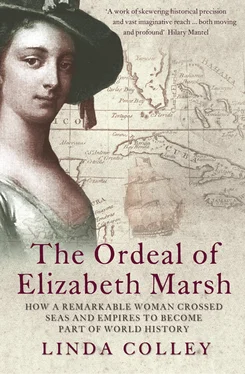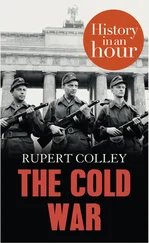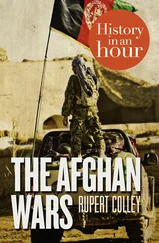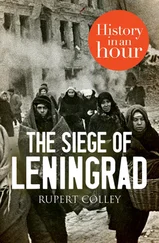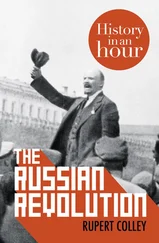LINDA COLLEY
The Ordeal of Elizabeth Marsh
How a Remarkable Woman Crossed Seas and Empires to Become a Part of World History
DEDICATION Dedication Map Conventions Introduction 1: Out of The Caribbean 2: Taken to Africa, Encountering Islam 3: Trading from London, Looking to America 4: Writing and Migrating 5: An Asiatic Progress 6: World War and Family Revolutions Ending – and Continuing Family Trees Manuscript Sources Index Acknowledgements About the Author Notes Praise Also by the Author Copyright About the Publisher
Jan Colley’s book
Cover
Title Page LINDA COLLEY The Ordeal of Elizabeth Marsh How a Remarkable Woman Crossed Seas and Empires to Become a Part of World History
Dedication DEDICATION Dedication Map Conventions Introduction 1: Out of The Caribbean 2: Taken to Africa, Encountering Islam 3: Trading from London, Looking to America 4: Writing and Migrating 5: An Asiatic Progress 6: World War and Family Revolutions Ending – and Continuing Family Trees Manuscript Sources Index Acknowledgements About the Author Notes Praise Also by the Author Copyright About the Publisher Jan Colley’s book
Map MAP The world – as Elizabeth Marsh and her extended family experienced it
Conventions CONVENTIONS Place names have changed radically since Elizabeth Marsh’s lifetime, especially in regions of the world that have previously been colonized or fought over by contending states. Many names remain contested. In this book, I generally use the names that are most current today: hence Dhaka and Menorca, rather than Dacca and Minorca. Some now-discarded place names possess so much historical resonance, however, that I have judged it inappropriate to update them. Thus I refer to Calcutta in these pages, not Kolkata. For the transliteration of Arabic terms and phrases, I have drawn on the Encyclopaedia of Islam and on the advice of expert friends. Making sense of the mangled Anglo-Indian terminology employed in Elizabeth Marsh’s Indian Journal has been made easier by the University of Chicago’s online version of Hobson-Jobson . In order to convey the fluctuating fortunes of the main characters in this book, I provide estimates at times of what they were worth in terms of today’s purchasing power. I have drawn these estimates from the ‘How much is that?’ site on EH.net. Before 1752, the British followed the Julian calendar and dated the beginning of the New Year from 25 March, not 1 January. Thus the captain’s log of the Kingston , the ship on which Milbourne Marsh set out from Portsmouth for Jamaica, has it readying for sail in early 1731. But in terms of the modern Gregorian calendar, it was early in 1732 that the Kingston was got ready; and I have used the modern-style year throughout the text and endnotes. When quoting from original manuscripts in the text, I have modernized spelling, extended abbreviations, and altered punctuation whenever the sense has seemed to demand it. Books cited in the endnotes are published in London unless otherwise stated. I describe at the beginning of the notes the other conventions I employ in the course of them.
Introduction INTRODUCTION ‘I search for Eliza every where: I discover, I discern some of her features … But what is become of her who united them all?’ ABBÉ RAYNAL THIS IS A BIOGRAPHY that crosses boundaries, and it tells three connected stories. The first is the career of a remarkable but barely known woman, Elizabeth Marsh, who lived from 1735 to 1785, and who travelled farther and more dangerously by sea and in four continents than any female contemporary for whom records survive. The second story is concerned with members of her extended family, her parents, uncle, brothers, husband, children, multiple cousins and other, more distant, kin. Because of the nature of their occupations, their migrations and their ideas, these people played vital roles in fostering Elizabeth Marsh’s own conspicuous mobility. They also helped to connect her, in both constructive and traumatic ways, with some of the most transformative forces of her age. For this is not just an account of an individual and a family: it is also, and thirdly, a global story. Elizabeth Marsh’s existence coincided with a distinctive and markedly violent phase of world history, in which connections between continents and oceans broadened and altered in multiple ways. These changes in the global landscape repeatedly shaped and distorted Elizabeth Marsh’s personal progress. So this book charts a world in a life and a life in the world. It is also an argument for re-casting and re-evaluating biography as a way of deepening our understanding of the global past.
1: Out of The Caribbean
2: Taken to Africa, Encountering Islam
3: Trading from London, Looking to America
4: Writing and Migrating
5: An Asiatic Progress
6: World War and Family Revolutions
Ending – and Continuing
Family Trees
Manuscript Sources
Index
Acknowledgements
About the Author
Notes
Praise
Also by the Author
Copyright
About the Publisher
The world – as Elizabeth Marsh and her extended family experienced it
Place names have changed radically since Elizabeth Marsh’s lifetime, especially in regions of the world that have previously been colonized or fought over by contending states. Many names remain contested. In this book, I generally use the names that are most current today: hence Dhaka and Menorca, rather than Dacca and Minorca. Some now-discarded place names possess so much historical resonance, however, that I have judged it inappropriate to update them. Thus I refer to Calcutta in these pages, not Kolkata.
For the transliteration of Arabic terms and phrases, I have drawn on the Encyclopaedia of Islam and on the advice of expert friends. Making sense of the mangled Anglo-Indian terminology employed in Elizabeth Marsh’s Indian Journal has been made easier by the University of Chicago’s online version of Hobson-Jobson .
In order to convey the fluctuating fortunes of the main characters in this book, I provide estimates at times of what they were worth in terms of today’s purchasing power. I have drawn these estimates from the ‘How much is that?’ site on EH.net.
Before 1752, the British followed the Julian calendar and dated the beginning of the New Year from 25 March, not 1 January. Thus the captain’s log of the Kingston , the ship on which Milbourne Marsh set out from Portsmouth for Jamaica, has it readying for sail in early 1731. But in terms of the modern Gregorian calendar, it was early in 1732 that the Kingston was got ready; and I have used the modern-style year throughout the text and endnotes. When quoting from original manuscripts in the text, I have modernized spelling, extended abbreviations, and altered punctuation whenever the sense has seemed to demand it. Books cited in the endnotes are published in London unless otherwise stated. I describe at the beginning of the notes the other conventions I employ in the course of them.
‘I search for Eliza every where: I discover, I discern some of her
features … But what is become of her who united them all?’
ABBÉ RAYNAL
THIS IS A BIOGRAPHY that crosses boundaries, and it tells three connected stories. The first is the career of a remarkable but barely known woman, Elizabeth Marsh, who lived from 1735 to 1785, and who travelled farther and more dangerously by sea and in four continents than any female contemporary for whom records survive. The second story is concerned with members of her extended family, her parents, uncle, brothers, husband, children, multiple cousins and other, more distant, kin. Because of the nature of their occupations, their migrations and their ideas, these people played vital roles in fostering Elizabeth Marsh’s own conspicuous mobility. They also helped to connect her, in both constructive and traumatic ways, with some of the most transformative forces of her age. For this is not just an account of an individual and a family: it is also, and thirdly, a global story. Elizabeth Marsh’s existence coincided with a distinctive and markedly violent phase of world history, in which connections between continents and oceans broadened and altered in multiple ways. These changes in the global landscape repeatedly shaped and distorted Elizabeth Marsh’s personal progress. So this book charts a world in a life and a life in the world. It is also an argument for re-casting and re-evaluating biography as a way of deepening our understanding of the global past.
Читать дальше
